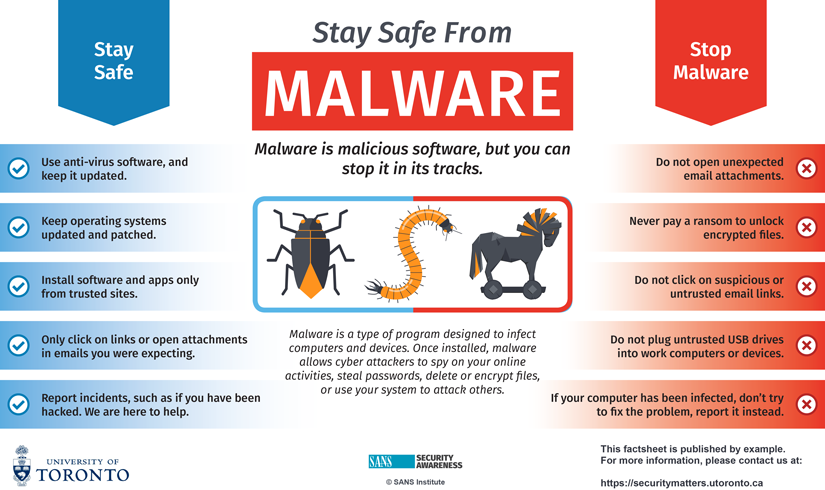Cyber attackers are constantly looking for new vulnerabilities in the software your devices use. When they discover vulnerabilities, they use special programs to exploit them and hack into the devices. Meanwhile, the companies that created the software are hard at work fixing them by releasing updates.
Here are some tips and resources to help protect your devices against malware while working remotely:
- Enable automatic updates on your devices. By ensuring your computers and mobile devices install these updates promptly, you make it much harder for someone to hack you. This rule applies to almost any technology connected to a network, including not only your work devices but Internet-connected TVs, baby monitors, security cameras, home routers, gaming consoles or even your car. If your computer is managed by your department, automatic updates may already be enabled.
- Install Microsoft System Center Endpoint Protection (anti-virus for Windows); it is available for no charge on University owned or leased equipment. See microsoft.utoronto.ca for more information.
- If you are using a work-provided computer remotely, be sure to only download and use products and software that are approved by your department.
- See this tip sheet on how to protect yourself from phishing attacks.
- Promptly report incidents to your IT personnel. See this list of contacts for details.
See more detail in this document.

Additional Security Matters articles about malware:
